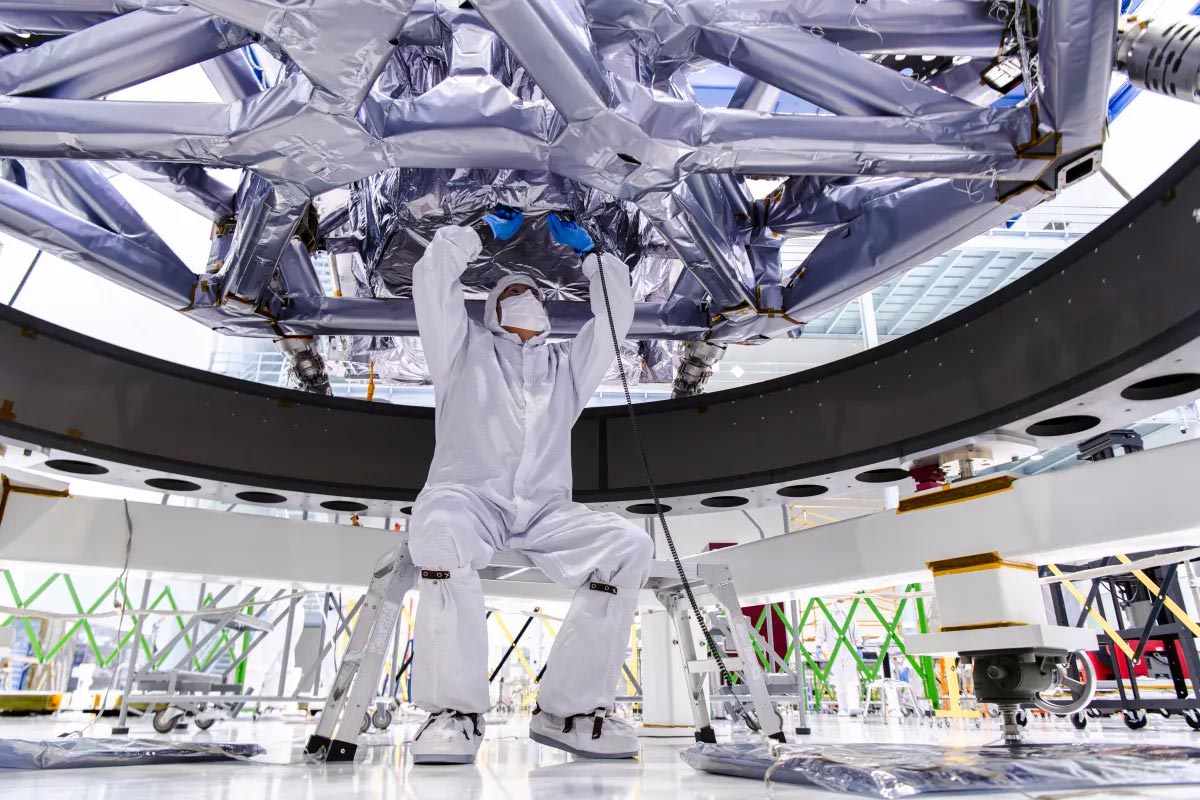
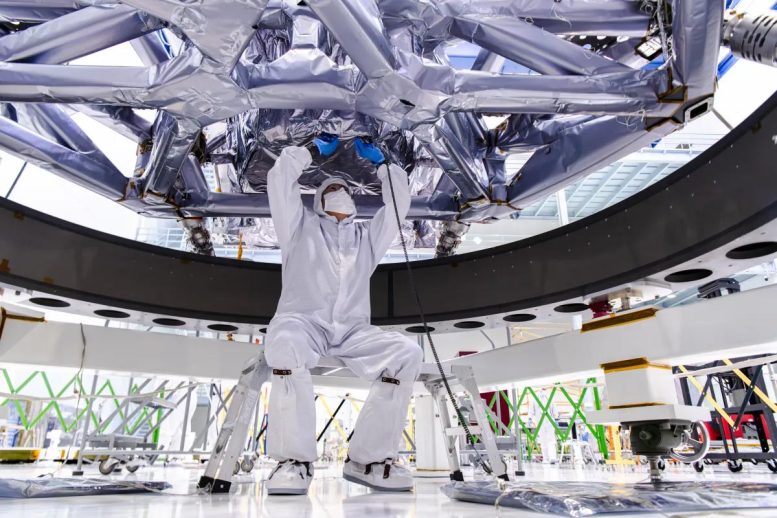
NASA’s Roman Space Telescope team has integrated the innovative Roman Coronagraph Instrument, marking a major milestone in exoplanet exploration technology.
Installed at Goddard, the coronagraph aims to refine methods of observing planets beyond our solar system by reducing stellar interference. This successful integration lays the groundwork for future life-detection missions.
Integrating the Roman Coronagraph Instrument
NASA’s Nancy Grace Roman Space Telescope team has successfully integrated the Roman Coronagraph Instrument onto the telescope’s Instrument Carrier. This carrier is designed to support and hold the mission’s various instruments, which will be mounted on the larger spacecraft at a later stage. The Roman Coronagraph serves as a pioneering technology demonstration, offering scientists a vital tool in the search for potentially habitable planets and, ultimately, signs of life beyond Earth.
The integration took place at NASA’s Goddard Space Flight Center in Greenbelt, Maryland, where the Roman Space Telescope is currently located and under development. This milestone follows the arrival of the coronagraph earlier this year from NASA’s Jet Propulsion Laboratory (JPL) in Southern California, where it was developed, built, and rigorously tested.
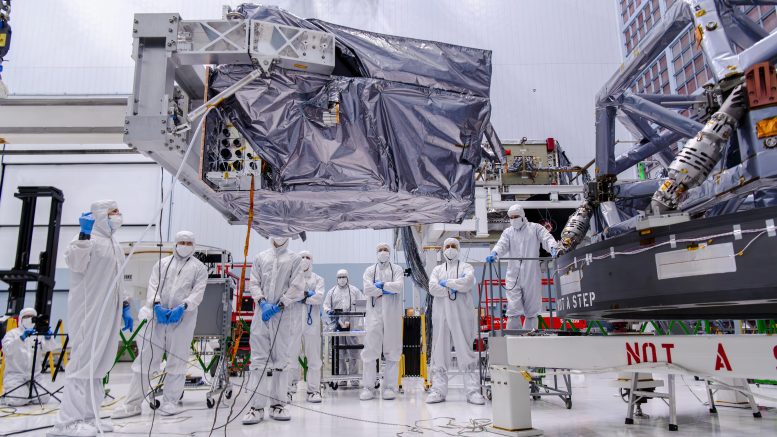
The Roman Coronagraph Instrument is a technology demonstration that will launch aboard the Nancy Grace Roman Space Telescope, NASA’s next flagship astrophysics mission. Roman will have a field of view at least 100 times larger than the agency’s Hubble Space Telescope and explore scientific mysteries surrounding dark energy, exoplanets, and infrared astrophysics. Roman is expected to launch no later than May 2027.
Observing Exoplanets with Precision
The mission’s coronagraph is designed to make direct observations of exoplanets, or planets outside of our solar system, by using a complex suite of masks and active mirrors to obscure the glare of the planets’ host stars, making the planets visible. Being a technology demonstration means that the coronagraph’s goal is to test this technology in space and showcase its capabilities. The Roman Coronagraph is poised to act as a technological stepping stone, enabling future technologies on missions like NASA’s proposed Habitable Worlds Observatory, which would be the first telescope designed specifically to search for signs of life on exoplanets.
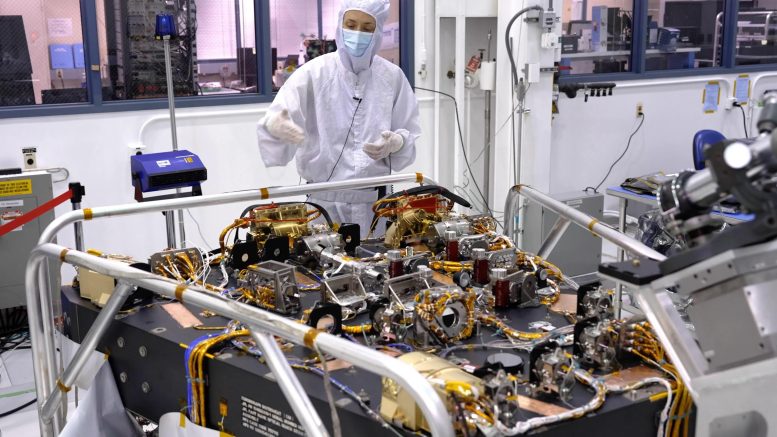
“In order to get from where we are to where we want to be, we need the Roman Coronagraph to demonstrate this technology,” said Rob Zellem, Roman Space Telescope deputy project scientist for communications at NASA Goddard. “We’ll be applying those lessons learned to the next generation of NASA flagship missions that will be explicitly designed to look for Earth-like planets.”
A Major Mission Milestone
The coronagraph was successfully integrated into Roman’s Instrument Carrier, a large grid-like structure that sits between the space telescope’s primary mirror and spacecraft bus, which will deliver the telescope to orbit and enable the telescope’s functionality upon arrival in space. The assembly of the mission’s spacecraft bus was completed in September.
The Instrument Carrier will hold both the coronagraph and Roman’s Wide Field Instrument, the mission’s primary science instrument, which is set to be integrated later this year along with the Roman telescope itself. “You can think of [the Instrument Carrier] as the skeleton of the observatory, what everything interfaces to,” said Brandon Creager, lead mechanical engineer for the Roman Coronagraph at JPL.
The integration process began months ago with mission teams from across NASA coming together to plan the maneuver. Additionally, after its arrival at NASA Goddard, mission teams ran tests to prepare the coronagraph to be joined to the spacecraft bus.
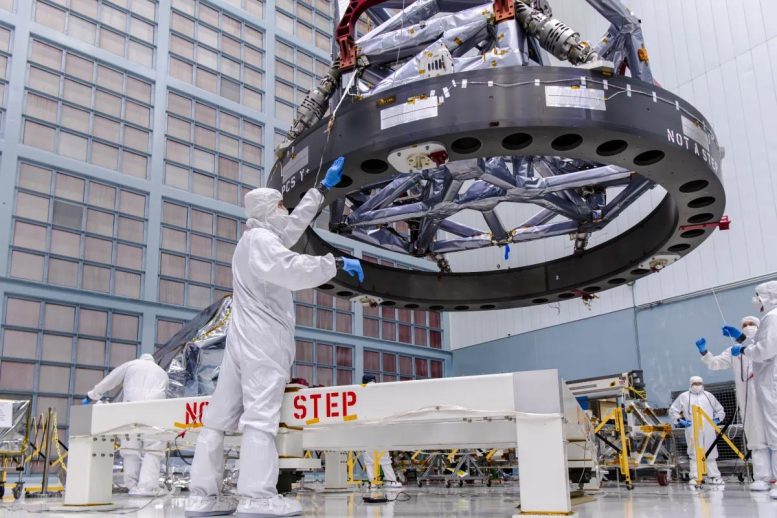
The Intricate Integration Process
During the integration itself, the coronagraph, which is roughly the size and shape of a baby grand piano (measuring about 5.5 feet, or 1.7 meters across), was mounted onto the Instrument Carrier using what’s called the Horizontal Integration Tool.
First, a specialized adapter developed at JPL was attached to the instrument, and then the Horizontal Integration Tool was attached to the adapter. The tool acts as a moveable counterweight, so the instrument was suspended from the tool as it was carefully moved into its final position in the Instrument Carrier. Then, the attached Horizontal Integration Tool and adapter were removed from the coronagraph. The Horizontal Integration Tool previously has been used for integrations on NASA’s Hubble and James Webb Space Telescope (JWST).
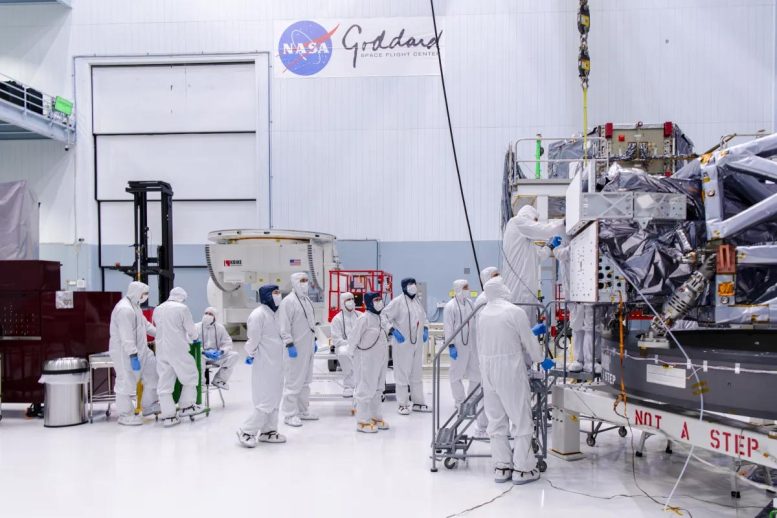
Ensuring Proper Insulation and Alignment
As part of the integration process, engineers also ensured blanketing layers were in place to insulate the coronagraph within its place in the Instrument Carrier. The coronagraph is designed to operate at room temperature, so insulation is critical to keep the instrument at the right temperature in the cold vacuum of space. This insulation also will provide an additional boundary to block stray light that could otherwise obscure observations.
Following this successful integration, engineers will perform different checks and tests to ensure that everything is connected properly and is correctly aligned before moving forward to integrate the Wide Field Instrument and the telescope itself. Successful alignment of the Roman Coronagraph’s optics is critical to the instrument’s success in orbit.
This latest mission milestone is the culmination of an enduring collaboration between a number of Roman partners, but especially between NASA Goddard and JPL.
“It’s really rewarding to watch these teams come together and build up the Roman observatory. That’s the result of a lot of teams, long hours, hard work, sweat, and tears,” said Liz Daly, the integrated payload assembly integration and test lead for Roman at Goddard.
“Support and trust were shared across both teams. … We were all just one team,” said Gasia Bedrosian, the integration and test lead for the Roman Coronagraph at JPL. Following the integration, “we celebrated our success together,” she added.
More About Roman
The Roman Coronagraph Instrument, designed and built at NASA’s Jet Propulsion Laboratory (JPL), is a groundbreaking technology demonstration developed for the Nancy Grace Roman Space Telescope. Managed by JPL, this instrument was created with international contributions from the European Space Agency (ESA), Japan Aerospace Exploration Agency (JAXA), the French space agency CNES, and Germany’s Max Planck Institute for Astronomy. Caltech oversees JPL’s operations, while the Roman Science Support Center at Caltech/IPAC collaborates with JPL on data management and command generation for the instrument. The Roman Coronagraph will play a key role in advancing our ability to directly observe exoplanets and search for potentially habitable worlds.
To virtually tour an interactive version of the telescope, visit:
https://roman.gsfc.nasa.gov/interactive
The Nancy Grace Roman Space Telescope, managed by NASA’s Goddard Space Flight Center in Greenbelt, Maryland, is a next-generation observatory designed to explore key astrophysical questions, such as the nature of dark energy and the search for habitable exoplanets. Developed with support from NASA’s Jet Propulsion Laboratory and Caltech/IPAC in Southern California, the Space Telescope Science Institute in Baltimore, and a diverse science team from multiple research institutions, the project brings together extensive expertise and collaboration. Key industrial partners include BAE Systems, Inc., L3Harris Technologies, and Teledyne Scientific & Imaging, providing advanced technologies and engineering for the telescope’s components.